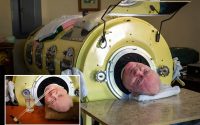Beauty benefits of cycle syncing your skin-care routine
Cycle syncing is beneficial, period.
It has been suggested that women who align their nutrition and fitness habits with their menstrual cycles optimize their health.
Dr. Hoosna Haque, an OB-GYN at NewYork-Presbyterian/Columbia University Irving Medical Center, speaking to Health Matters, explains, “Although cycle syncing has not been formally studied, it makes sense that paying attention to how hormonal fluctuations throughout your menstrual cycle affect your mood, appetite and energy levels can help you be more in tune with your body.”
Because your skin is the largest organ in your body, experts advocate for syncing your skin care to your cycle to aid in keeping your complexion as fresh as possible.
Licensed aesthetician Carrie Rene Hall and beauty expert Angela Rosoff of the skin-care app Luvly are on hand, or cheek as it were, with their suggestions for matching your skin care to best support every phase of your monthly cycle.
Hormonal fluctuations during the four stages of a menstrual cycle have a direct bearing on our skin, with research finding nearly half of all women experience premenstrual acne flares.
Hall explains, “Your cycle correlates to your skin. Sebum is the excess oil that causes pimples and when testosterone surges when other hormones dwindle, it causes an increase in sebum production. When women say, ‘I break out around my period,’ that’s their testosterone increasing.”
Hall refers to the ‘hormonal zone,’ of the face, around the chin and jawline as the area most affected by these changing levels.
To combat these conditions, both Hall and Rosoff suggest tailoring your skin care to the different phases of your cycle can aid in keeping skin fresh, clear and clean all month long.
How to tailor your skin-care routine to each menstrual phase
Menstruation (days 1-5)
Rosoff explains that during menstruation, estrogen and progesterone levels are at their lowest, your skin is at its most sensitive. Her recommendation? “Minimize your makeup use to allow your skin to breathe; swap any harsh formulas for soothing products; and treat breakouts with spot treatments, moisturizing masks and mild cleansers.”
Follicular phase (days 6-14)
During the follicular phase, estrogen levels are on the upswing and while this rise often equates to a little more glow, your skin is still in need of gentle TLC. Rosoff suggests simplicity, “Keep your skin-care routine simple, using mild hydrating products, and safeguard against environmental irritants. If makeup is a must, look for non-comedogenic formulas, which are less likely to clog your pores and stop your skin from recovering.”
Ovulation (day 14)
Ovulation is when women are allegedly at prime hotness, with research finding that their perceived facial attractiveness peaks after ovulation. Ovulation is also when testosterone and estrogen levels are at their highest and skin at its best.
Rosoff recommends using mild moisturizers and serums that offer plenty of hydration and nourishment to prolong that natural glow.
Luteal phase (days 15-28)
Hormone fluctuation is at an all-time high during the luteal phase, with skin oscillating between dry and oily. Rosoff recommends, adding “oil-balancing ingredients, such as niacinamide or tea tree oil, to your routine to find the right balance for your skin.”
Hall maintains that early in the luteal phase is a prime time to treat yourself to a facial as your skin is less sensitive and more receptive, prolonging the benefits of the treatment and preventing breakouts, “The benefit of a facial is deep exfoliation, and the double cleansing that you don’t really do on your own. Exfoliation breaks up the intercellular glue that holds your cells together, you’re sloughing off that dead skin layer and breaking up oil concentration, preventing future congestion.”
Lifestyle swaps to combat hormonal acne
Optimize your diet
To minimize the effects of hormonal changes on your skin, Rosoff suggests avoiding dairy, sugar and processed foods, which are prone to trigger hormonal acne.
A diet rich in fruit, veggies and foods high in omega-3 fatty acids is your best bet for keeping hormones in check and breakouts at a bare minimum. In addition, incorporating oils or adaptogens, such as Rhodiola or ashwagandha, evening primrose oil or chasteberry (vitex) can potentially help the body balance hormones, supporting healthier, brighter skin. However, good studies for the use of these supplements is scant, and although anecdotal evidence may abound, it’s worth checking with your doctor before starting any supplement routine. Ashwagandha, for example, should not be used if you’re taking certain thyroid or anti-diabetes medications.
Sleep more, stress less
Just as your body requires seven to nine hours of sleep to rejuvenate, so too does your skin. Establishing a consistent sleep schedule will help regulate hormones and contribute to a consistent complexion. Because stress has a direct effect on the skin, Rosoff recommends getting outside and engaging in yoga or meditation as soon as symptoms of stress present themselves. In her estimation, a clear head equals clear skin.
Boost your routine with these skin-care tools
Face yoga
Research shows doing face yoga on the daily can make you look three years younger. Rosoff is a proponent of this technique at any stage of your cycle, “Even a gentle massage can help reduce bloating and encourage lymphatic drainage during your menstrual cycle. You can use your hands, but a face roller or gua sha tools, which improve circulation and minimize puffiness, will help make your skin shine.”
For more tips on face yoga, see here.
Hall cautions against using face yoga and massage if your skin is currently congested. “If you’re already broken out I would not touch or massage the face. You can do face yoga that stretches the skin without contact but if you’re massaging or activating the skin you’re going to create more sebum and you can cause the skin to break out more.”
LED therapy
Regular inflammation and acne can be treated with LED light therapy devices such as a mask or wand. The red light boosts collagen and encourages healing while blue light combats the bacteria that causes breakouts.
In addition to using LED therapy on the skin of the face, Hall also applies it to her stomach to reduce symptoms of bloating and cramping associated with menstruation.
Steam for dreamy skin
As Rosoff explains, steaming your face opens the pores, allowing the skin to more fully absorb products, a real boon during the follicular phase when the skin is beginning its recovery.
Hall echoes her sentiment, “When your pores are open everything you put on top of it penetrates deeper and better. It’s also relaxing, it’s humidity for your skin.” Hall recommends women avoid daily steaming as too much water and steam can strip your face of natural oils. She suggests a monthly or bimonthly session of up to six minutes of steam for maximum benefit.


